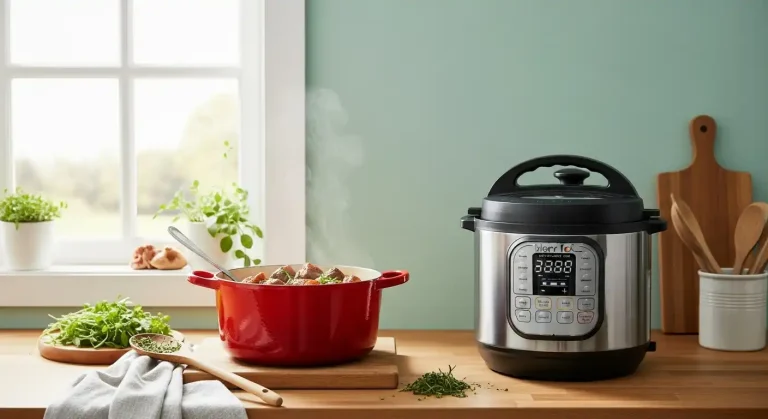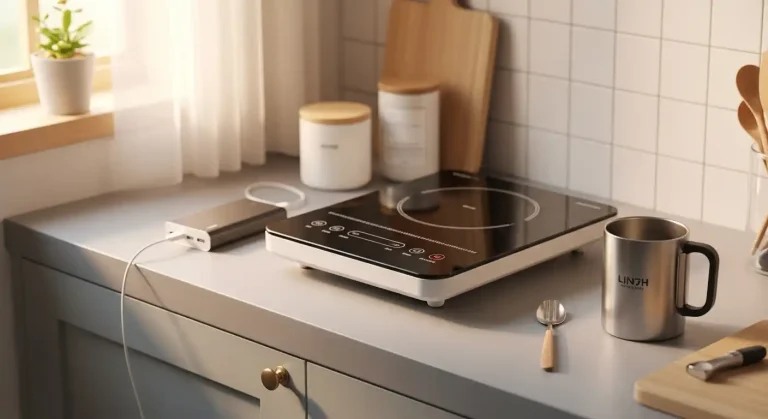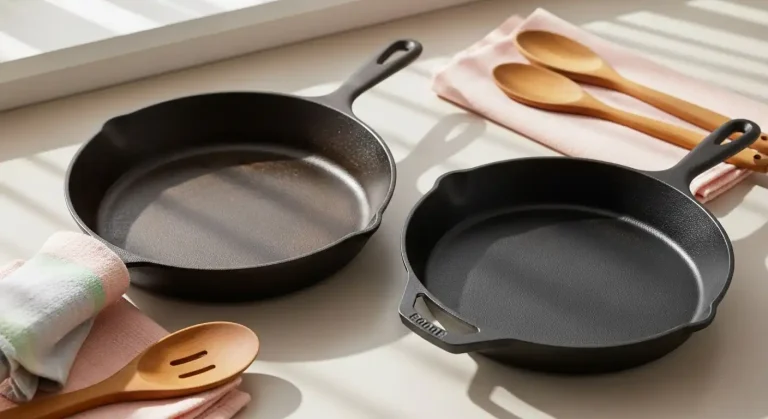How to Clean a Wok: The Essential Guide for Every Home Cook

If you’ve cooked with a wok, you know what a versatile kitchen tool it is.
Whether you’re stir-frying veggies, deep-frying dumplings, or even making popcorn, a wok delivers exceptional results.
But what happens when the cooking is done, and your once-pristine wok is coated in oil, food bits, and residue?
Knowing how to clean a wok properly ensures your cookware lasts for years and continues to deliver mouth-watering results.
Let’s break down everything you need to know to keep your wok in tip-top shape, whether it’s carbon steel, cast iron, or stainless steel.
Why Cleaning a Wok is Different From Cleaning Other Cookware
Unlike non-stick pans or stainless-steel pots, a wok develops a patina over time.
This dark, non-stick layer improves the flavor of your food and prevents rusting.
Over-scrubbing or using harsh detergents can strip away this seasoning, setting you back to square one.
For this reason, cleaning a wok is less about scrubbing it until it shines and more about preserving its seasoned surface.
If you’re new to wok cooking, you may want to check out how to season a carbon steel wok before diving into the cleaning process.
Step 1: Clean Immediately After Cooking

The best time to clean your wok is right after you finish cooking—when it’s still warm but not too hot to handle.
- Rinse the wok with hot water to loosen food particles.
- Use a soft sponge, bamboo brush, or wok cleaning pad to gently scrub away residue. Skip steel wool or abrasive scrubbers.
For carbon steel or cast iron woks, avoid dish soap unless absolutely necessary. Soap can strip away your hard-earned seasoning.
Stainless steel woks, on the other hand, can handle mild dish soap just fine.
Step 2: Tackle Stubborn Stuck-on Bits
If hot water alone doesn’t do the trick, here’s a natural solution:
- Fill your wok with water.
- Bring it to a simmer on the stove.
- Use a spatula or brush to gently scrape away any stuck-on food.
This gentle boiling loosens stubborn debris without harming the seasoning.
Still struggling? Check out how to clean a cast iron wok for some extra tips.
Step 3: Dry Thoroughly to Prevent Rust

Once your wok is clean, it’s vital to dry it thoroughly. Here’s how:
- Wipe it down with a clean towel.
- Place it over low heat for a few minutes to evaporate any remaining moisture.
This is especially important for carbon steel and cast iron woks, which can rust if left damp.
Step 4: Reapply a Thin Coat of Oil
After drying, apply a small amount of neutral oil (such as vegetable or canola oil) to the inside of the wok using a paper towel.
This step protects your seasoning and prevents rusting.
If your wok looks dull or patchy, you might want to learn about what your wok patina should look like to make sure your cookware is aging well.
Common Mistakes to Avoid When Cleaning a Wok
Using Dishwashers
Never put your wok in a dishwasher. The intense heat, harsh detergents, and extended water exposure will strip the seasoning and promote rust.
If you’re curious, you can learn more about whether woks are dishwasher safe.
Soaking for Long Periods
Soaking your wok for long periods can soften the seasoning and lead to rust formation, especially in carbon steel and cast iron woks.
Scrubbing With Harsh Tools
Steel wool, abrasive pads, or aggressive scrubbing can damage the wok’s seasoned surface.
Always opt for gentle tools like soft sponges or bamboo brushes.
Special Cleaning Scenarios
Burnt or Blackened Woks
If your wok has burnt-on food or is blackened beyond its natural patina, it might be time for a re-seasoning.
You can follow these steps or refer to this guide on how to season a wok on an electric stove.
Dealing With Rust
If your wok starts to rust, scrub the rusted area with steel wool until the rust is gone, then thoroughly wash, dry, and re-season your wok.
How to Clean a Wok Made from Different Materials

Carbon Steel
Carbon steel woks are loved for their quick heat response but require careful maintenance.
Cleaning is typically done with hot water and a gentle scrub. Regular seasoning is essential.
If you’re wondering whether carbon steel woks are safe, check out is carbon steel wok safe for health?.
Cast Iron
Cast iron woks are a bit heavier but retain heat beautifully.
Cleaning them follows the same general steps as carbon steel, with an extra emphasis on thorough drying.
Here’s a full comparison if you’re deciding between a wok vs cast iron skillet.
Stainless Steel
Stainless steel woks are low maintenance.
You can wash them with mild soap and water without worrying about damaging seasoning.
However, they don’t develop a patina like carbon steel or cast iron woks.
Keeping Your Wok Clean While Cooking
One handy trick to make post-cooking cleanup easier is to wipe down your wok between cooking batches.
If you’re stir-frying meat first and veggies second, wiping out excess oil and debris prevents flavors from clashing and reduces burnt bits.
If you’re using your wok for unconventional cooking like making rice, check out can you cook rice in a wok? for additional tips.
How to Clean a Wok If You Accidentally Used Soap
Let’s face it, mistakes happen. If you accidentally washed your seasoned wok with dish soap, don’t panic.
Just rinse thoroughly, dry, and apply a light coat of oil.
If the seasoning feels stripped, give your wok a quick re-seasoning session on your stovetop or in the oven.
Final Thoughts: Maintaining the Heart of Your Kitchen
Learning how to clean a wok properly is more than a chore—it’s a way to care for one of the most dynamic tools in your kitchen.
With regular maintenance, your wok will only improve over time, offering better performance and richer flavors with every dish.
And if you’re still on the fence about using a wok compared to other cookware, be sure to read our breakdown of why a wok is better than a frying pan, or explore wok vs frying pan for a side-by-side comparison.
Happy cooking—and even happier cleaning!






